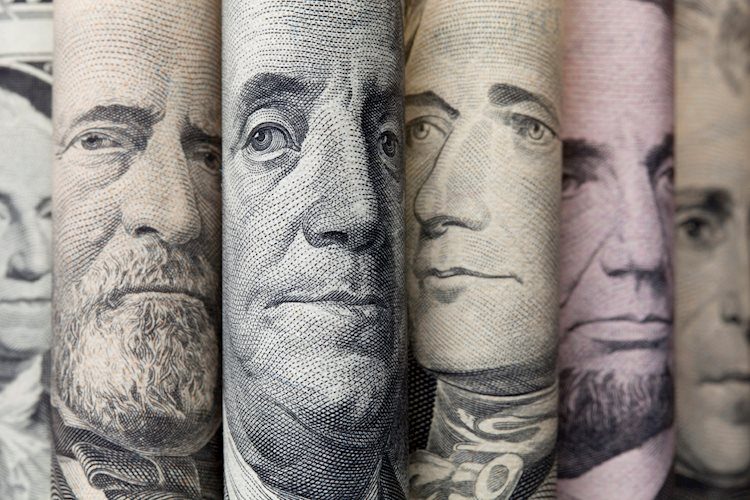- A disappointing July jobs report sparked hopes of a September rate cut as well as recession fears.
- ISM Services data shows signs of improvement, overall economy remains strong.
- Market prices in 125 bps of Fed easing by year-end.
The US Dollar (USD), measured by the DXY index, came under initial selling pressure at the start of Monday’s session but later erased losses after the release of positive ISM Services figures for July. The index initially fell to 102.20 but recovered to trade around 102.70.
Despite the positive data, the market’s fear is that the US economic outlook turned weak and investors worry that the US might be headed toward a recession.
Daily digest market movers: USD recovers after ISM Services data, markets worry about a recession in the US
- On the data front, the Services Employment Index climbed from 46.1 to 51.1 while the New Orders Index increased from 47.3 to 52.4.
- The Services PMI moved from contraction to growth, rising from 48.8 to 51.4.
- Soft US jobs data last Friday sparked fears that the Fed is lagging, leading to a global bond rally and equity sell-off on both Friday and Monday.
- The market is fully pricing in a 125 bps easing by year-end, with a 50 bps cut expected in September.
- A total easing of 225 bps over the next 12 months seems unlikely unless a deep US recession occurs. In that sense, it seems that markets are overreacting to one data point, and Fed speakers might cool down the dovish bets as the market has repeatedly misjudged the Fed’s easing path throughout this cycle.
DXY technical outlook: Bearish bias persists, indicators now in oversold region
The DXY outlook turned bearish after the disappointing jobs report last week. The index fell below both the 20-day and 200-day Simple Moving Averages (SMAs). The momentum-based Relative Strength Index (RSI) and the Moving Average Convergence Divergence (MACD) also declined, indicating increasing selling pressure. The RSI below 30, however, indicates that a correction might be looming.
Supports: 102.50, 102.20, 102.00
Resistances: 103.00, 103.50, 104.00
US Dollar FAQs
The US Dollar (USD) is the official currency of the United States of America, and the ‘de facto’ currency of a significant number of other countries where it is found in circulation alongside local notes. It is the most heavily traded currency in the world, accounting for over 88% of all global foreign exchange turnover, or an average of $6.6 trillion in transactions per day, according to data from 2022. Following the second world war, the USD took over from the British Pound as the world’s reserve currency. For most of its history, the US Dollar was backed by Gold, until the Bretton Woods Agreement in 1971 when the Gold Standard went away.
The most important single factor impacting on the value of the US Dollar is monetary policy, which is shaped by the Federal Reserve (Fed). The Fed has two mandates: to achieve price stability (control inflation) and foster full employment. Its primary tool to achieve these two goals is by adjusting interest rates. When prices are rising too quickly and inflation is above the Fed’s 2% target, the Fed will raise rates, which helps the USD value. When inflation falls below 2% or the Unemployment Rate is too high, the Fed may lower interest rates, which weighs on the Greenback.
In extreme situations, the Federal Reserve can also print more Dollars and enact quantitative easing (QE). QE is the process by which the Fed substantially increases the flow of credit in a stuck financial system. It is a non-standard policy measure used when credit has dried up because banks will not lend to each other (out of the fear of counterparty default). It is a last resort when simply lowering interest rates is unlikely to achieve the necessary result. It was the Fed’s weapon of choice to combat the credit crunch that occurred during the Great Financial Crisis in 2008. It involves the Fed printing more Dollars and using them to buy US government bonds predominantly from financial institutions. QE usually leads to a weaker US Dollar.
Quantitative tightening (QT) is the reverse process whereby the Federal Reserve stops buying bonds from financial institutions and does not reinvest the principal from the bonds it holds maturing in new purchases. It is usually positive for the US Dollar.

